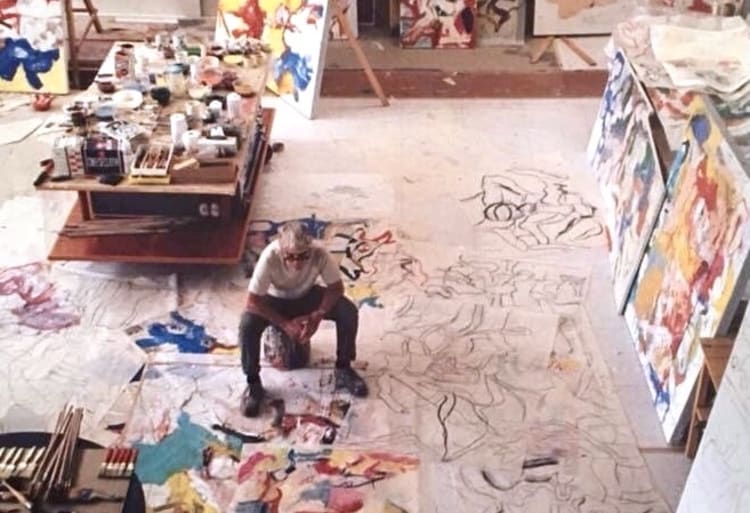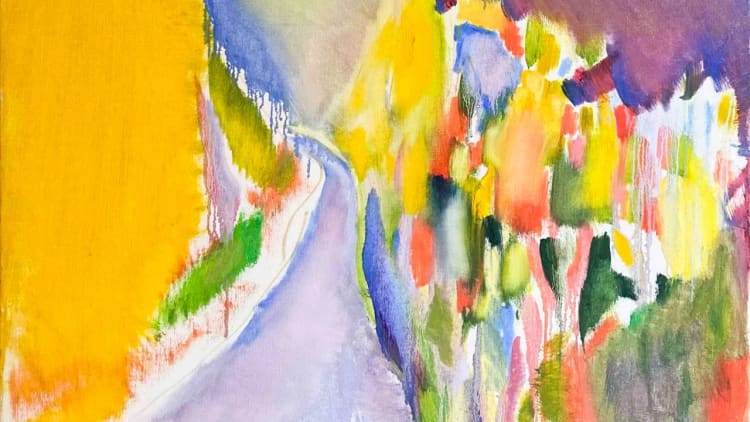A painter and sculptor cursed during his lifetime, immersed in alcohol and drugs, Amedeo Modigliani (1884-1920) created in his short life spent between his country of origin, Italy, and his adopted country, France, an abundant series of masterpieces. To get to know this immense 20th century artist better, discover seven things to know about his life and work.

1 - A genius of sculpture and painting
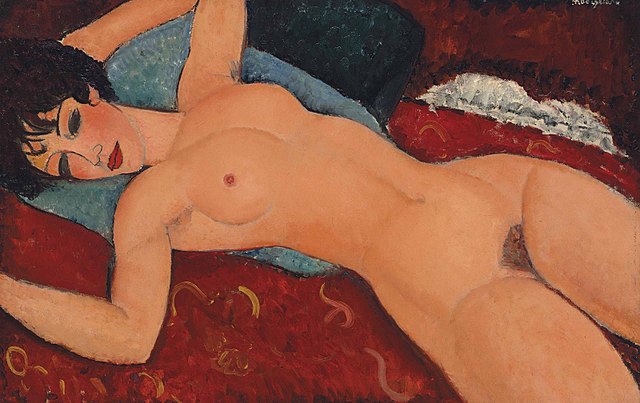
Red nude, Amedeo Modigliani, 1917
Like the great Michelangelo, Amedeo Clemente Modigliani excelled both as a sculptor and a painter. He arrived in Paris in 1906 to continue his training and settled in Montmartre, not far from the Bateau-Lavoir. In his early days, he painted in a style close to Steinlen, Toulouse-Lautrec and Picasso's blue period.
Under the influence of the immense Constantin Brancusi who was his neighbor in Paris, Modigliani first devoted himself to sculpture, carving a series of busts and figures directly in stone. He never ceased to consider that his activity as a sculptor was his true trade. In the end, it was only the lack of money and the difficulty in obtaining stones that made him turn to painting.
Today, he is recognized above all as a painting genius and his paintings even reach astronomical prices at public sales.
2 - Amedeo Modigliani and his portraits of women
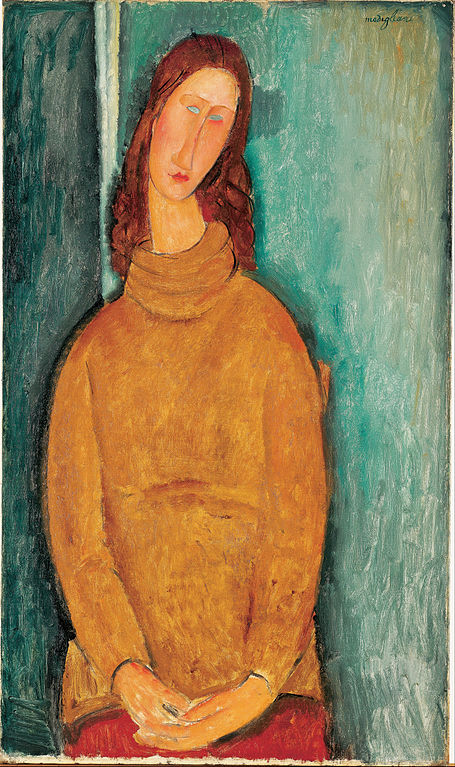
Portrait of Jeanne Hébuterne, Amedeo Modigliani, 1919
Modigliani painted many portraits of women, especially of two women who shared his life: Beatrice Hastings and Jeanne Hébuterne.
These female portraits are mostly stylized with quick contours that reduce the faces to a few elements. His backgrounds are generally quite simple and he likes to give his models almond-shaped eyes.
Modigliani's portraits of women are similar to the medieval primitives of his native Tuscany, but are also close to the Pre-Raphaelites, Pointillists and Whistler whom he admired.
One of Modigliani's last paintings, perhaps the last, is entitled Portrait of Jeanne Hébuterne. It was painted in 1919 and depicts Jeanne Hébuterne pregnant: she was expecting their second child who, with Jeanne's next suicide, was never to see the light of day.
This portrait is considered one of the most beautiful paintings Modigliani ever painted. It is painted with sublime warmth. Christian Zervos, a great publisher and art critic has written about Modigliani's last works that "we find in it a greater penetration of the character of the sentimental perception that unites and amalgamates the whole painting, while in the previous works the emotion was often localized".
3 - Amedeo Modigliani, great friend of Chaïm Soutine
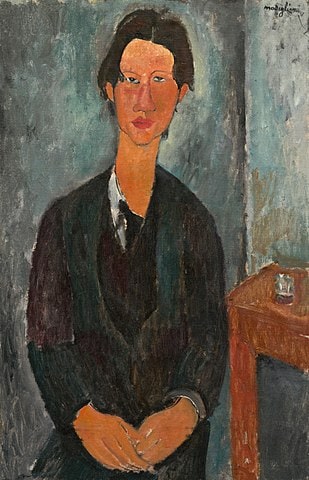
Chaïm Soutine, Amedeo Modigliani, 1917
Between Modigliani and Soutine, between the expansive Tuscan and the shy Lithuanian, the friendship was immediate. Modigliani took under his wing the young and unsilver Chaim Soutine, sensing in him painting talents that he himself had difficulty expressing and recognizing.
Having become almost inseparable, they rented a studio together in 1916 at the Cité Falguière in Paris, near Montparnasse. They worked side by side without influencing each other in their work. Each one follows his own intuitions.
However Modigliani, unlike Soutine, has repeatedly painted the portrait of his young friend. One of the most famous was painted in 1917. He is now at the National Gallery of Art in Washington. Soutine is represented there in a calm and meditative atmosphere.
Modigliani had great admiration for his friend until his death. Shortly before his death he told his great friend, the art dealer Zborowski: "Don't worry, in Soutine I leave you a man of genius.".
4 - A street bears his name in Paris
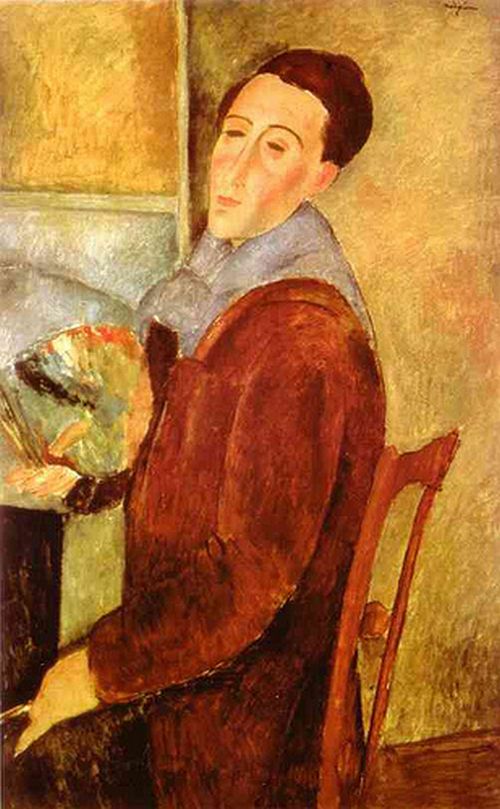
Self-Portrait, Amedeo Modigliani, 1919
Located in the fifteenth arrondissement of Paris, the street named Modigliani starts at 89 rue Balard and ends at 10 rue Jongkind. This pedestrian street was inaugurated in 1981 when the former factories of the French car manufacturer Citroën were reassigned.
The rue Modigliani forms, together with the Jean Cocteau square, the green space called "Jean Cocteau square and Modigliani mail". A sculpture entitled The Fountain of the Polypores, by sculptor Jean-Yves Lechevallier, is located at the entrance of this green space. Some people call this fountain, The Modigliani Fountain.
5 - A tragic death for him and his companion

Suffering from acute tubercular meningitis, Amedeo Modigliani died on January 24, 1920. Upon hearing this sad news, Jeanne Hébuterne was totally desperate. She committed suicide two days later, by escaping from the 5th floor of her parent's apartment, she was only 21 years old.
They both rest in a common grave in the Père Lachaise cemetery in Paris. Their grave bears the following epitaph: "Amedeo died when he reached glory and Jeanne was his devoted companion to the point of extreme sacrifice.".
6 - Amedeo Modigliani inspires the forgers
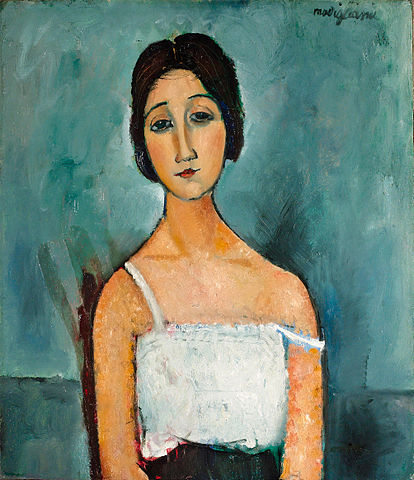
Christina, Amedeo Modigliani, 1916
The man born on July 12, 1884 in Livorno, Italy, has long been the prey of more or less talented forgers.
One of the best known of these is a certain Réal Lessard, a Canadian artist who became a forger under the leadership of one of the greatest swindlers in the art world, Fernand Legros.
As he recounts in his memoirs published by Hachette, under the title L'Amour du Faux (The Love of Fake), Réal Lessard made many fake Modigliani, including : Portrait of Jeanne Hébuterne.
This portrait painted in 1959 was presented as an authentic Modigliani. It was reproduced under number 123 in the catalog of the sale at Christie's on December 6, 1963. It is described as having to appear in the catalog of Modigliani's works prepared by Arthur Pfannstiel and sold with the certificate of the latter, and even that of Modigliani's daughter, Jeanne!
But he was not the only forger of Modigliani, far from it. Then there was another forger known under the name of David Stein, then a certain Wolfgang Beltracchi.
In 2017, a scandal was unleashed in Italy over an exhibition devoted to Modigliani. According to expert Carlo Pepi, a third of the works on display were fakes. The Italian justice intervened and had all the disputed paintings sequestered.
7 - Amedeo Modigliani had a daughter
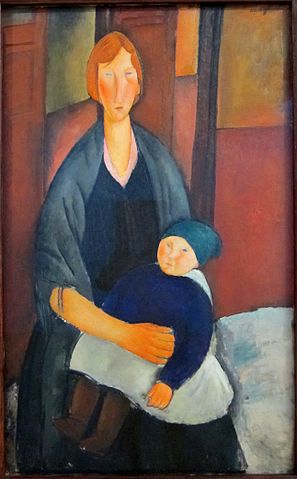
Maternity, Amedeo Modigliani, 1919
Modigliani had for only direct descent a daughter born in 1918, Giovanna. Afterwards she was known by the name of Jeanne, her mother was Jeanne Hébuterne.
Giovanna became Jeanne and married the Italian economist Mario Cesare Silvio Levi. During the Second World War, she joined the French resistance.
On that occasion, she met Waldemar Nechtschein whom she married for a second time. With him she had two daughters, Anne in 1946 and Laure in 1951. She divorced in 1980.
She became a late art historian and wrote a biography of her father under the title Modigliani, l'homme et le mythe (Modigliani, the man and the myth). She dies in Paris in 1984 at the age of 65.


